I always wanted to go on an African Safari but the idea of one always felt too intimidating – it always seemed too expensive, too far away to travel to, too difficult to plan. When Kevin and I finally decided that we needed to make this bucket list trip happen, we made Kruger National Park our first safari experience – as South Africa’s first national park, Kruger National Park is unique in that it offers tourists the chance for a DIY (do-it-yourself) safari i.e., you don’t have to take an organized safari tour, but rather, can drive through the park in your own car and save a ton of money. At the same time, there are a lot of great options for guided safaris at Kruger as well.
We chose to do a hybrid experience at Kruger and spent the first part of our trip doing a self-drive, and the second half of our trip in the Kapama Private Game Reserve. I honestly think we got the best of both worlds doing our trip this way, and highly recommend doing the same. While the self-drive portion gave us freedom, I don’t think we would have seen the Big Five (especially the elusive leopard) without the help of our tracker from the private safari experience.

Since visiting Kruger, I’ve added a couple of other safaris under my belt (e.g., Masai Mara in Kenya), and I can honestly say that Kruger National Park is really the BEST place to visit for first-time safari goers – it’s extremely accessible, provides you with a lot of different budget and lodging options, and is also a great place for spotting the Big Five (also known as the lion, elephant, buffalo, rhino, and leopard). Since planning a safari in Kruger National Park is no easy feat…read about our experience and check out our travel guide below!

We visited Kruger National Park as part of an epic tour of South Africa. To read more about our experiences in this country, check out these related posts here: How We Spent 4 Days in Cape Town | The Perfect Wine Weekend in Stellenbosch
Related Post: How We Spent 4 Days in Cape Town
Related Post: The Perfect Wine Weekend in Stellenbosch
When to Visit Kruger National Park
The best time to visit Kruger National Park really depends on what type of experience you’re looking for. If you want to have the best chance of spotting animals, then the dry winter season (May to September) is a good time to visit as the bush is not as thick, and animals tend to gather around the water holes. We visited in the month of May and were able to see all of the Big 5, and also enjoyed wonderful weather during the day (nights were a bit chilly). If you’re interested in seeing lush vegetation, then visit Kruger National Park during the summer season.

How to Get to Kruger National Park
There are two main airports that serve Kruger National Park: Hoedspruit/Eastgate (HDS) and Kruger Mpumalanga International Airport (KMIA/MQP). Kruger is also a popular self-drive destination so another option is to drive to the park from Johannesburg which will take you roughly 4 hours. Finally, it is possible to take a flight to Skukuza Airport which is in the park itself, but flight prices are more expensive. We flew into Kruger Mpumalanga after arriving at Johannesburg (O.R. Tambo International Airport), and rented a car from the AVIS at the airport to kick-off the first leg of our safari.

How Many Days to Spend in Kruger
An important thing to remember is that Kruger National Park is huge! As one of the largest national parks in the world, Kruger covers almost 7,600 miles and is larger than over 90 countries (e.g., Israel, Belgium). Don’t try to tackle it all at once – for a first timer’s visit to Kruger, I would recommend budgeting at least 4-5 days as this will give you the opportunity to see a few different entrance gate areas of the park, and also split your time reasonably between a self-drive and private safari.
How to Best Experience Kruger National Park
The Best Entrance Gates in Kruger
There are nine entrance gates at Kruger National Park. The closest gate to Johannesburg O.R. Tambo International Airport is Numbi Gate. It is commonly known that the southern and central areas of Kruger National Park (Skukuza Camp, Lower Sabie, Crocodile Bridge) tend to offer the best animal viewing, and these areas also have well-serviced rest camps if you’re choosing to stay within the park.
TIP: When booking a car rental, try to book one with more height, such as a four-wheel drive. This will allow you to get a better view over the tall grass during animal viewing.
Our DIY Safari Itinerary
We spent two and a half days doing a DIY safari in Kruger National Park. After picking up our car rental from Kruger Mpumalanga airport, we made the 1.5 hour drive to our lodging for the night: Mvuradona Safari Lodge, which is located in Marloth Park just a short 20-minute drive away from the Crocodile Bridge Entrance gate. We LOVED our stay at Mvuradona Safari Lodge – this riverside accommodation featured an authentic African thatch lodge with huge suites, and a delicious homecooked three-course dinner every night next to the firepit. It was a great place to spot zebra, giraffe, warthog, and impala by the pool in the evenings.
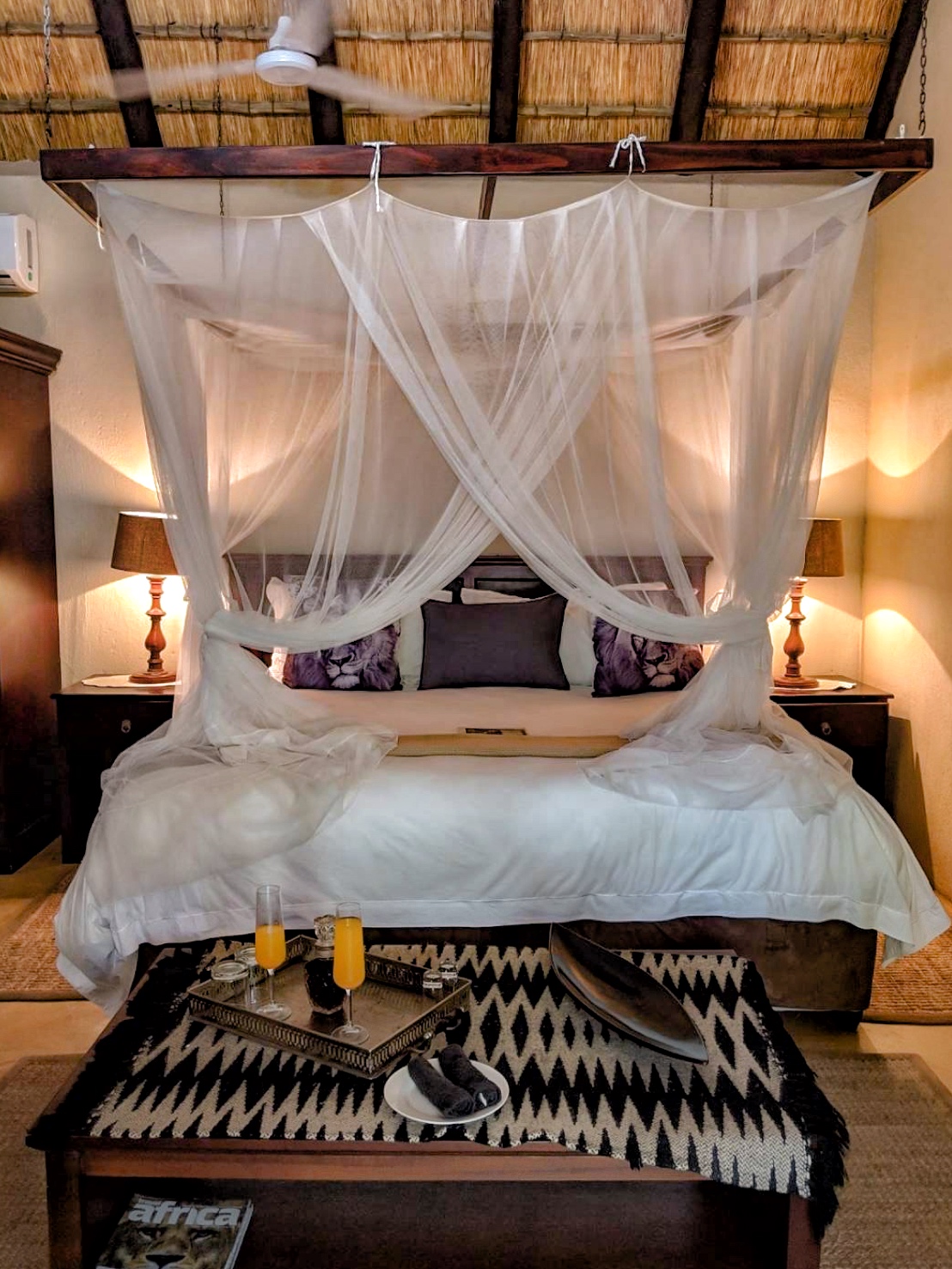

TIP: Prior to entering the park, I’d recommend stopping by a grocery store to pick-up some snacks and water to have in the car with you. While there are rest camps, food options are fairly limited!
The next morning, we made our way to the Crocodile Bridge Gate to enter Kruger National Park to start day 1 of our grand safari experience. We opted for pre-paid entry into the gate which I would highly recommend, because there was already a line at the park when we arrived at the gate around 5:30am in the morning! Our route took us up the H4-2 Tar road to Lower Sabie – Gomondwane Road which is known for great game sightings. Even though it was a wet morning (cue the song ‘Africa’ by Toto), we saw a lot of animals, and were especially excited when we had to stop for 15 minutes because a family of baboons decided to party on the road and block all of the cars from driving.
My favorite moment from that first day was spotting an elephant for the first time in the wild, especially since we spotted it right when the song ‘Circle of Life’ from the Lion King soundtrack started playing from our ‘African Safari’ playlist — what a perfectly timed moment. I have to admit that it was totally nerve-wracking driving next to such a massive animal! One flip of it’s trunk and our car would’ve suffered some major damage.


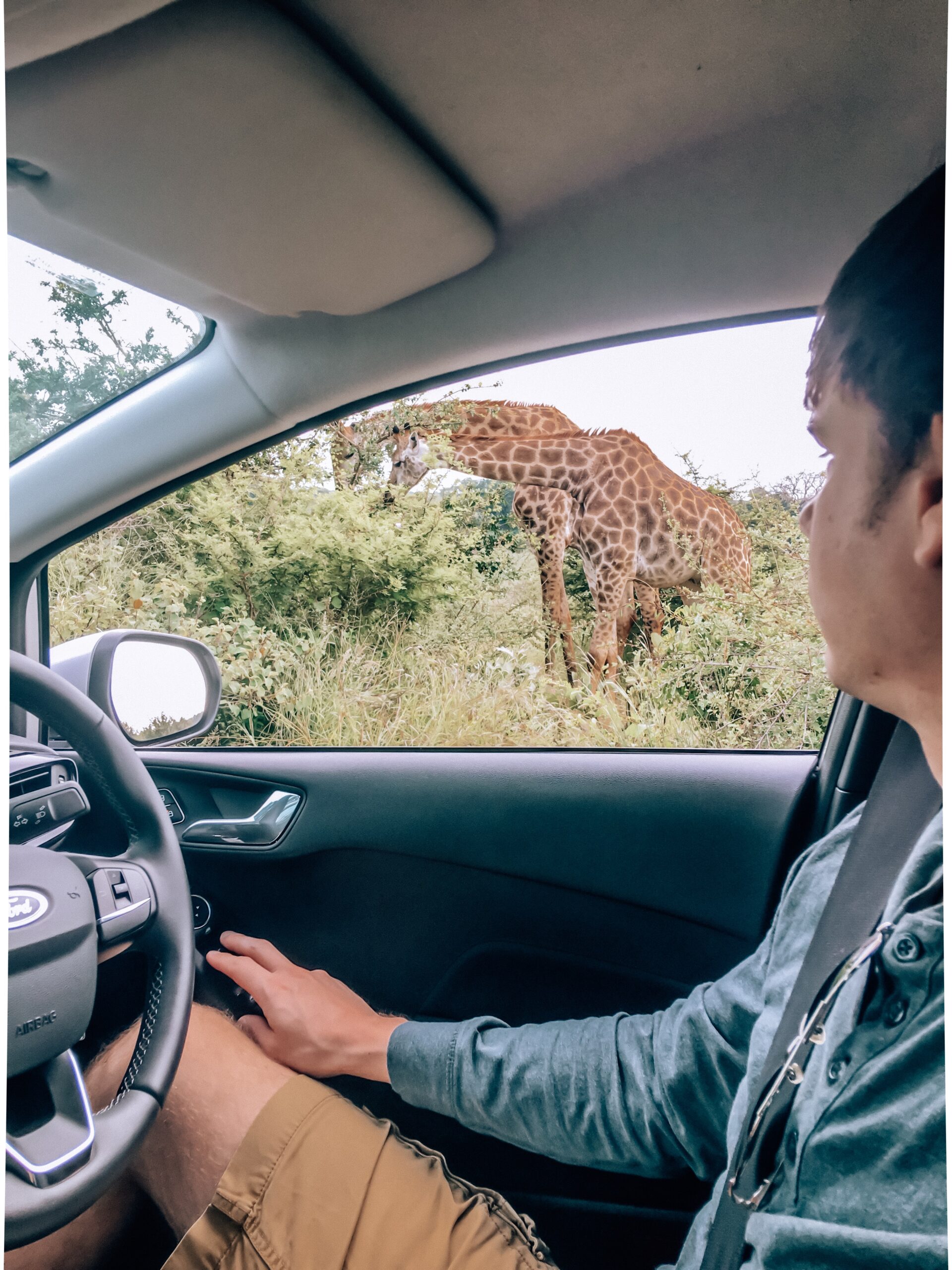

To stretch our legs, we made sure to stop by rest camps as we passed them. The Kruger rest camps are a great source of information as they have sighting boards which show where the Big 5 were recently spotted, to help you plan your next stop. It was because of these sighting boards that we were able to experience a rare sighting of a black hippo! Finally, we ended our first day in the park by exiting the Malale Gate (40-minutes away from our lodge), before heading back to Mvuradona Safari Lodge for a romantic fireside dinner.
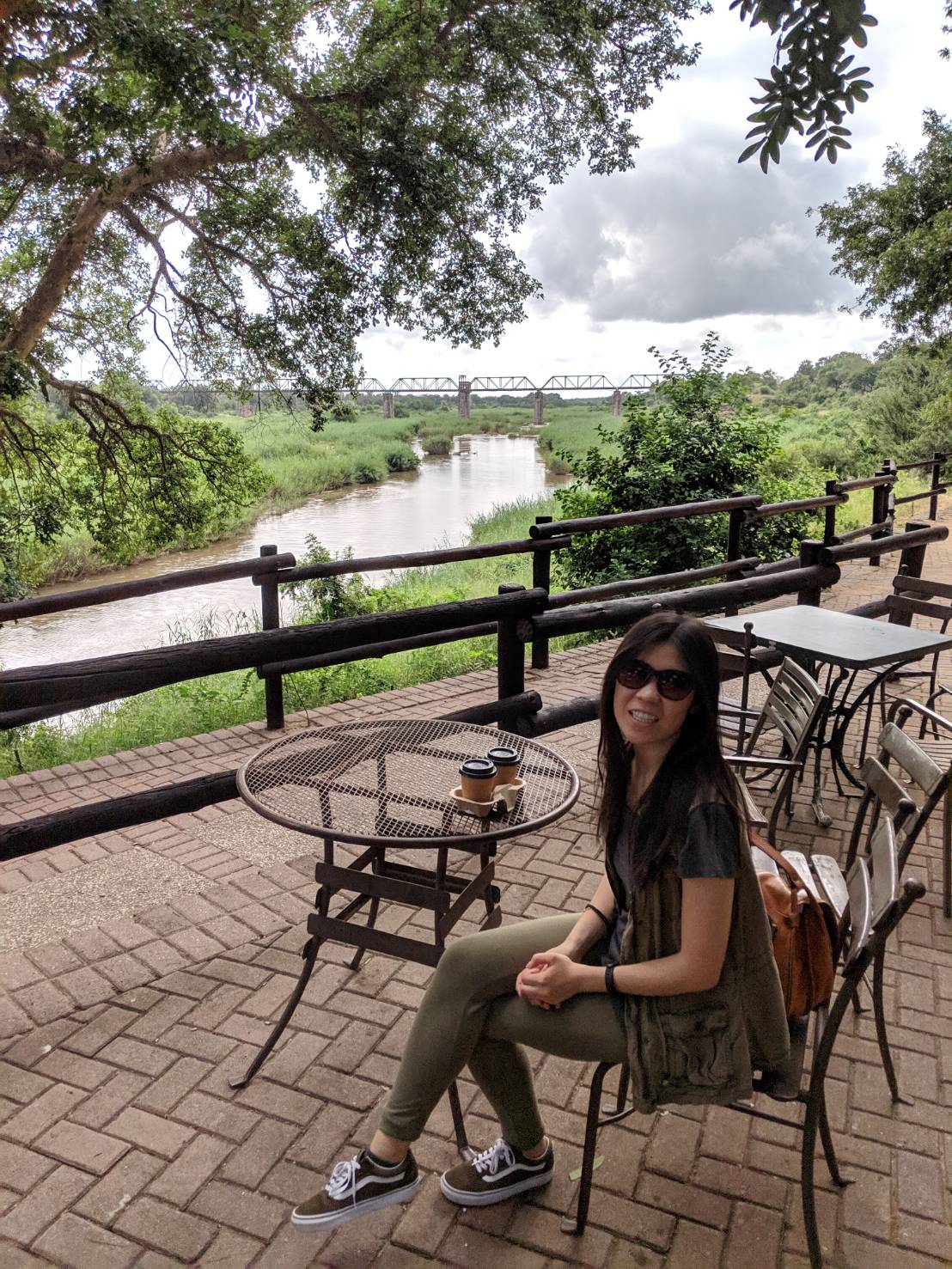


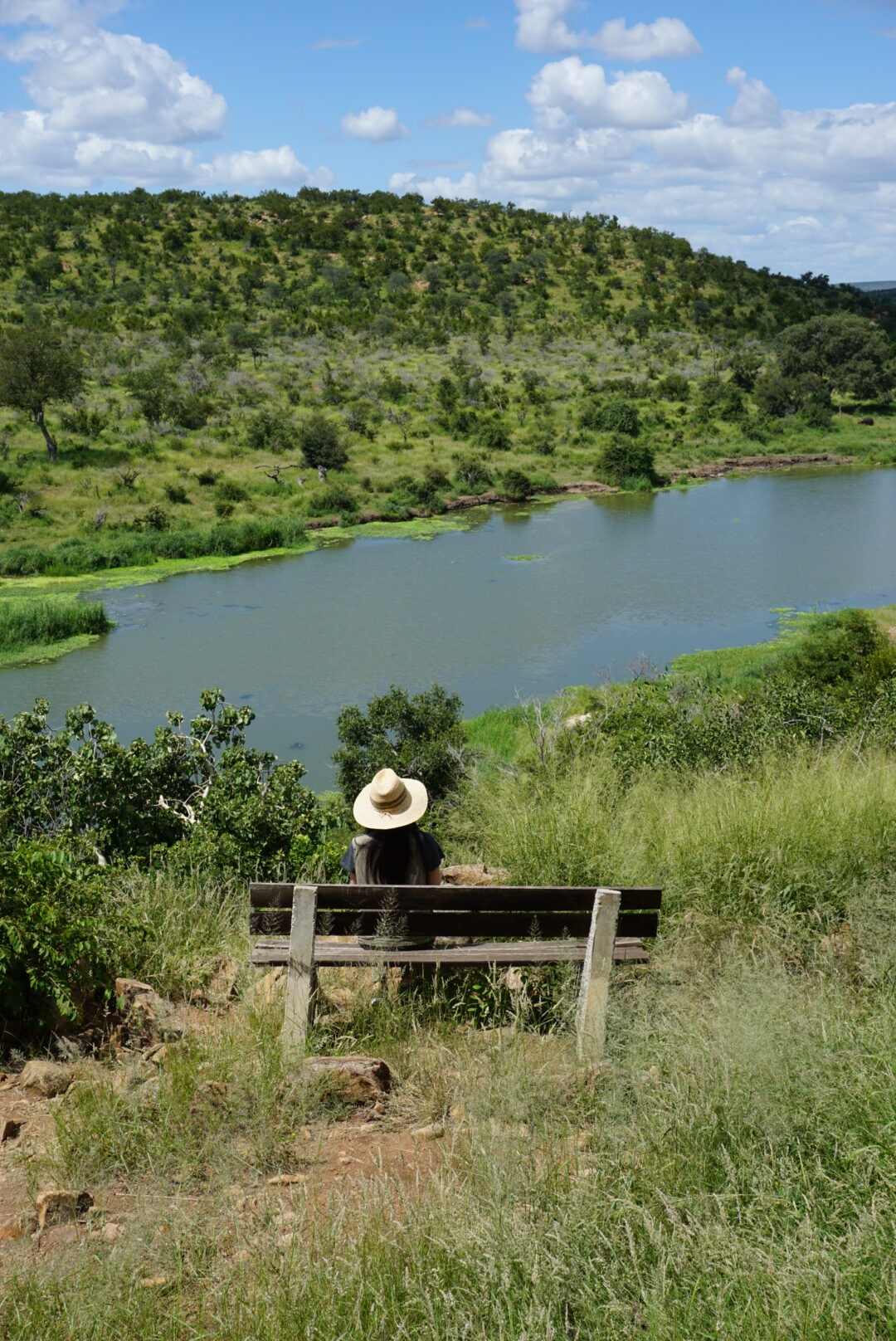
The second day of our self-drive DIY safari in Kruger took us through the Skukuza area, exiting out the Phalaborwa Gate. Again, we saw a ton of wildlife but the highlight of the day was spotting two male lions and three baby lion cubs crossing the street! This was particularly surprising since male lions typically don’t take an active role in raising their children. Plus, it’s not everyday a lion passes you by while you sit in your car!


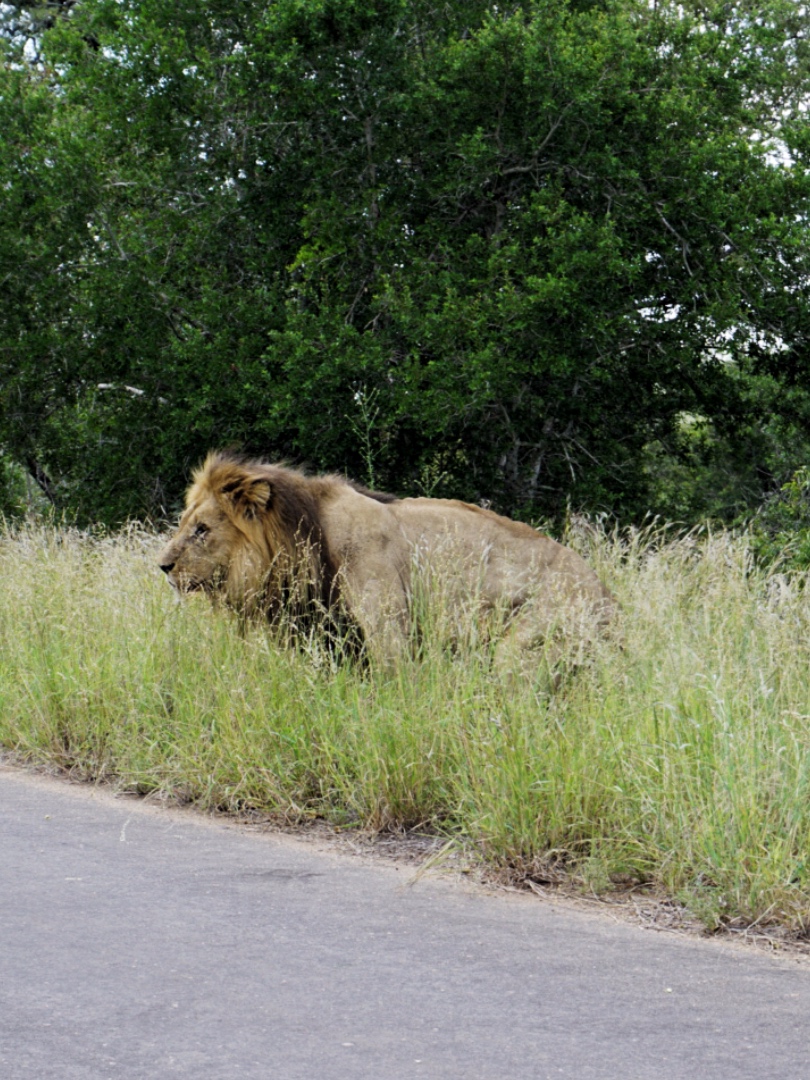
Instead of heading back to our original lodge, we made our way to Rissington Inn to stay the night. We chose to stay in a different location based on that day’s route through the park and to limit the amount of driving ‘back’. The Rissington Inn was another great stay – located in Hazyview, this bed & breakfast was a total charmer. We had our own bungalow to ourselves with a private outdoor shower and patio for sundowners, with a lovely 3-course meal served at the main house.
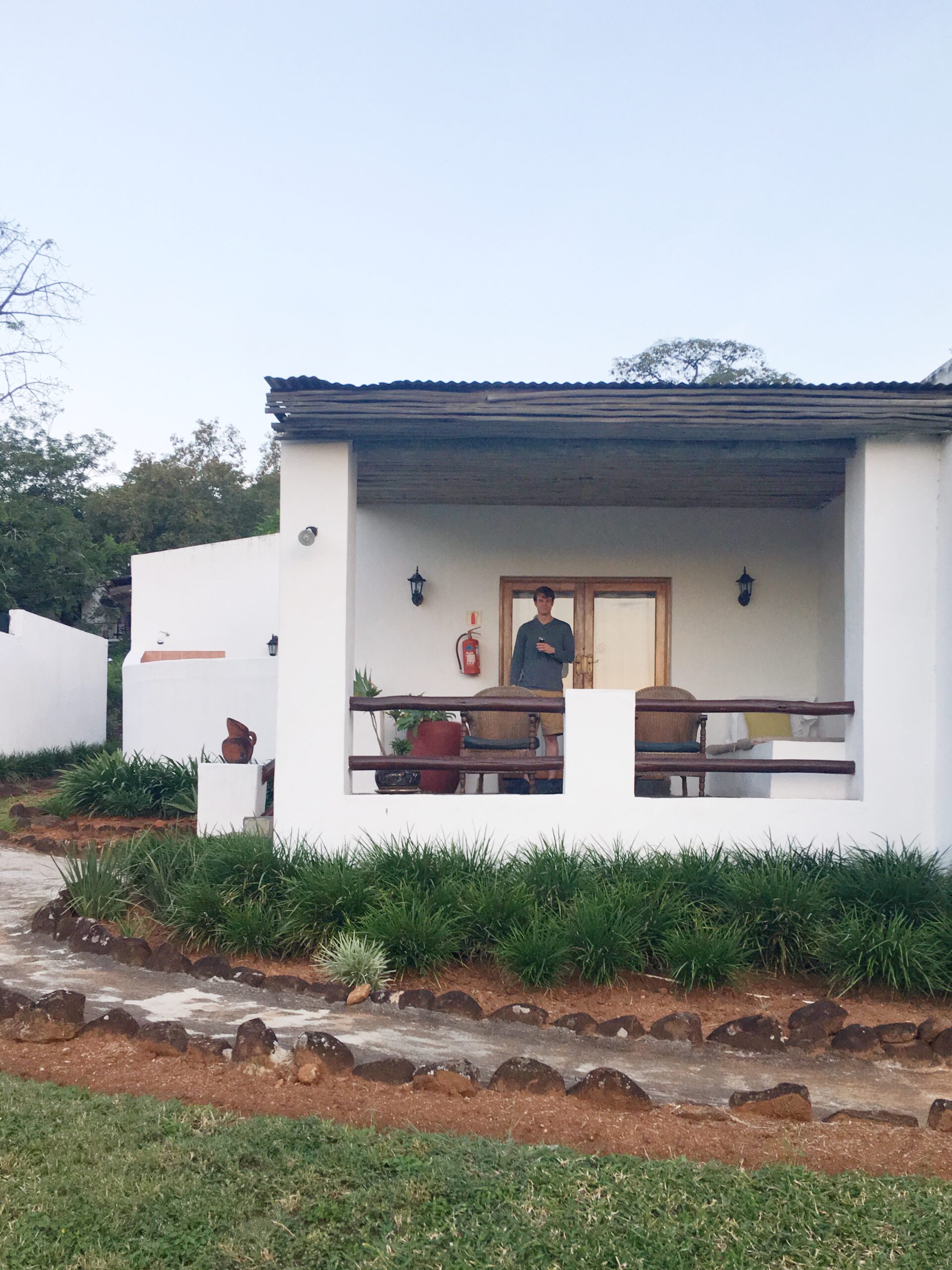


Our Kapama Private Game Reserve Safari Itinerary
The next morning kicked off our transition from a DIY self-drive safari to a private guided safari. We dropped off our rental car at the Hoespruit Airport (roughly 1.5 hour drive from Rissington Inn). After having done a ton of research on various private game reserves in Kruger, we decided to opt for Kapama Private Game Reserve and seriously had the best time ever with them. If you want to do a guided safari and are debating which company to go with, I can honestly say that our time at Kapama, and the service we received was world class. They picked us up from Hoespruit Airport and drove us to the reserve in a jeep – we got a major kick out of this because we spotted a lot of animals on our way to the lodge (I mean, there were zebras roaming the airport grounds!), and it felt like we got a ‘bonus’ safari because of it.



Kapama offers 4 different lodging options when you book with them – the Kapama River Lodge, Buffalo Camp, Southern Camp, or Kapama Karula, and each one of them provides a very different experience. We chose the Kapama River Lodge as it was the most affordable (still pricey…but worth the money…more on that later), but still offered luxury suites, and the same safari experience. The River Lodge is also known to be the more ‘social’ of camps with large airy meeting and dining areas. The property is seriously gorgeous! If you’re wanting a more intimate, exclusive safari experience, I’d opt for Buffalo Camp or Southern Camp.
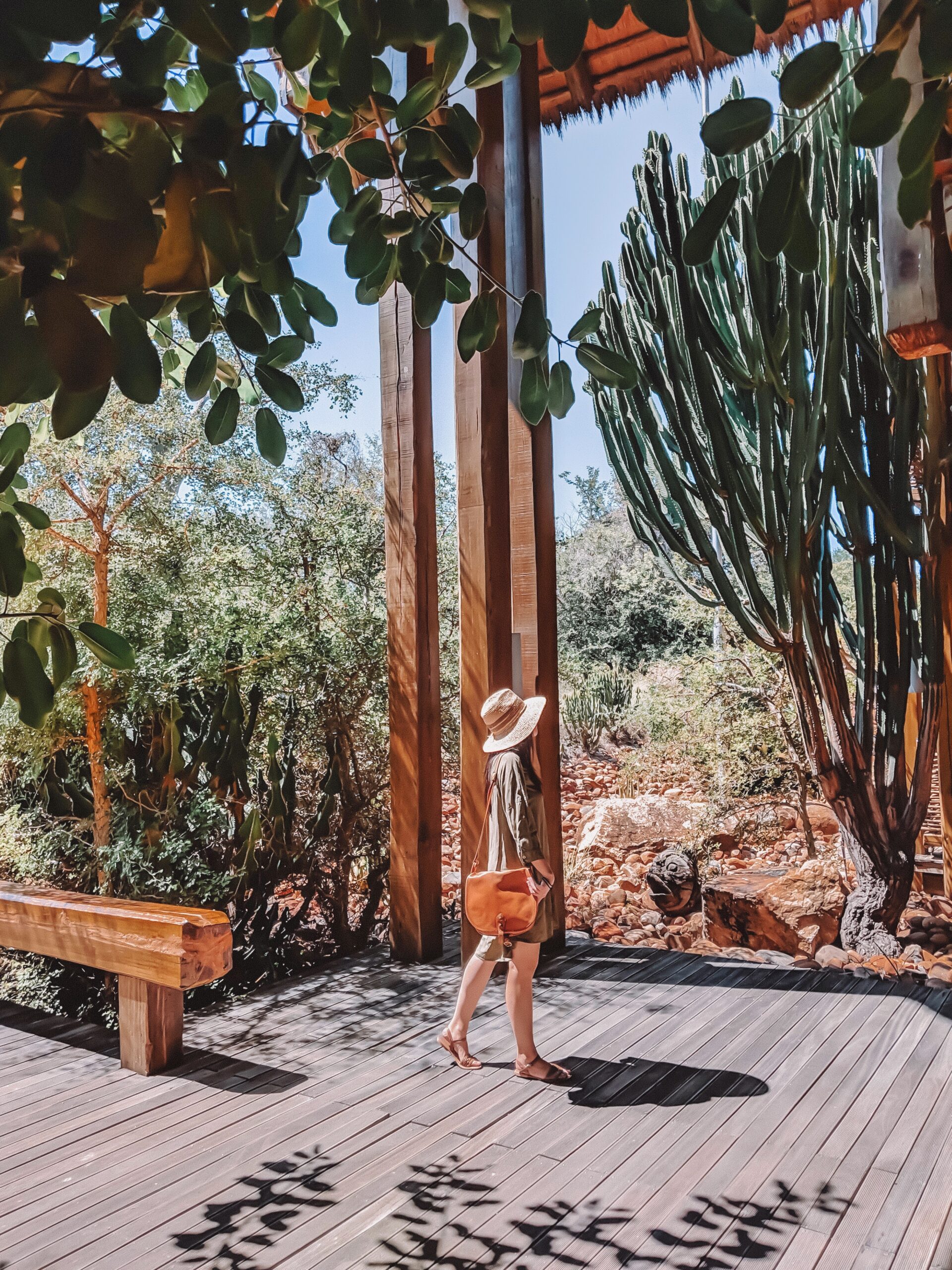




We loved everything about our time with Kapama. They organized everything for us – I MEAN EVERYTHING. Our schedules were laid out for us each day with an early breakfast, morning safari, lunch, rest time, afternoon tea, afternoon safari, sundowners, and dinner. At Kapama, you are organized into the same ‘group’ for the duration of your stay, which is roughly 8-10 people (we were paired with an older couple from Canada, and a younger couple from Brazil, and had a blast with them). Each group is then assigned a dedicated ranger and tracker for the trip (our ranger was named Gerard, our tracker was named Sepo, and they were both wonderful!), and they are responsible for your tour and safety during the safaris, and also eat with you during dinner time. This set-up made it so nice to get to know our ranger and tracker, and also gave them flexibility to manage our group schedules as needed (for example, they let us stay out a little bit later than normal as we were trying to spot a white rhino and needed more time in the reserve to find one).
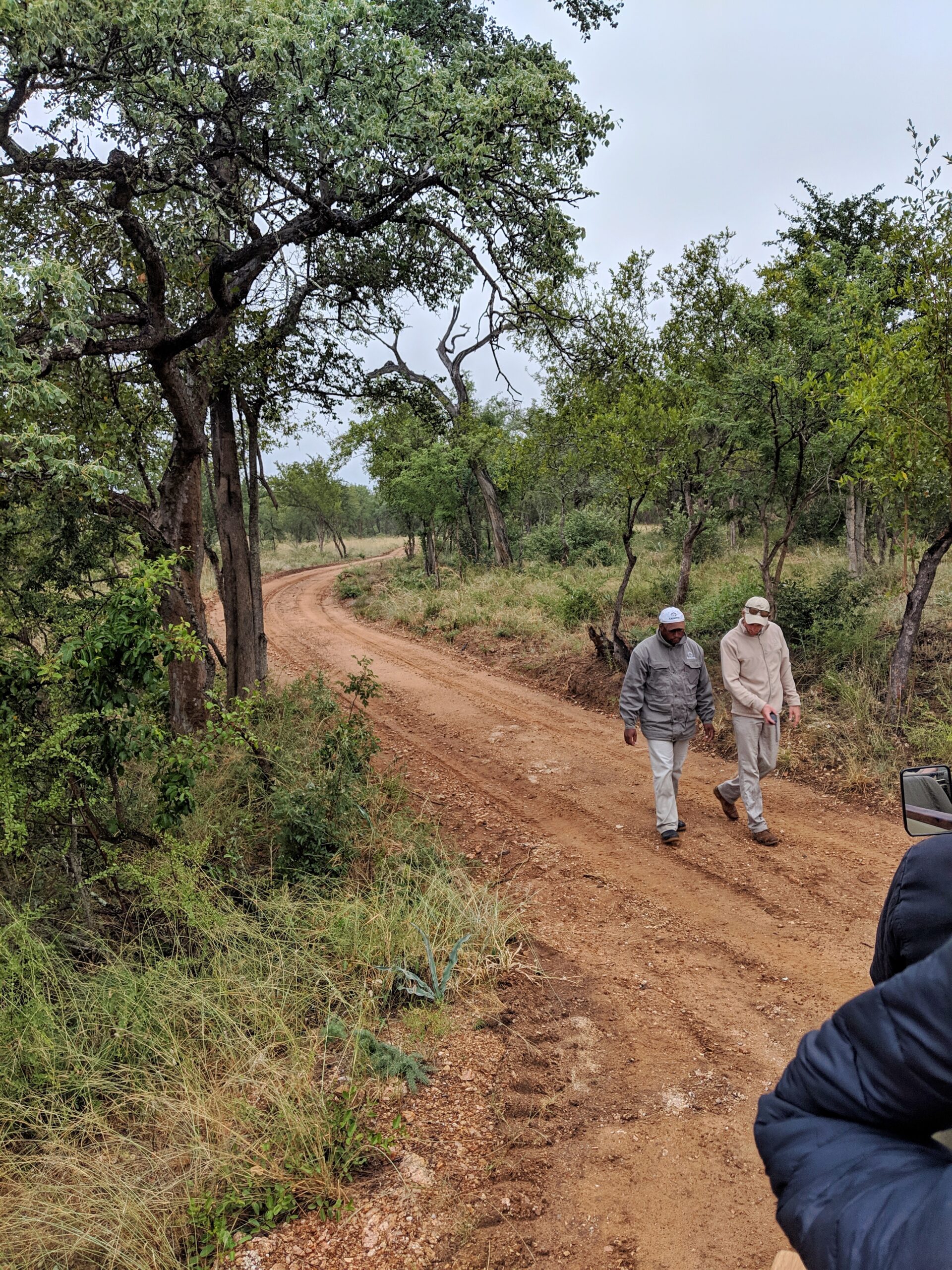
Our three-day stay with Kapama was the perfect amount of time for seeing all of the animals we wanted (three days meant that we were able to go on 6 different safaris!). And while we were able to spot a lot of animals during our self-drive, nothing really beats the experience of riding out in a huge open-air safari jeep and being closer to the wildlife. The rangers at Kapama talk to each other through walkie-talkies throughout the course of the day as well, making it easy for them to share animal sightings when they happen! You also learn a lot from the rangers during the drives – they know so many different facts about the animals, and it’s also fascinating to watch them observe the various tracks to see where to go next.
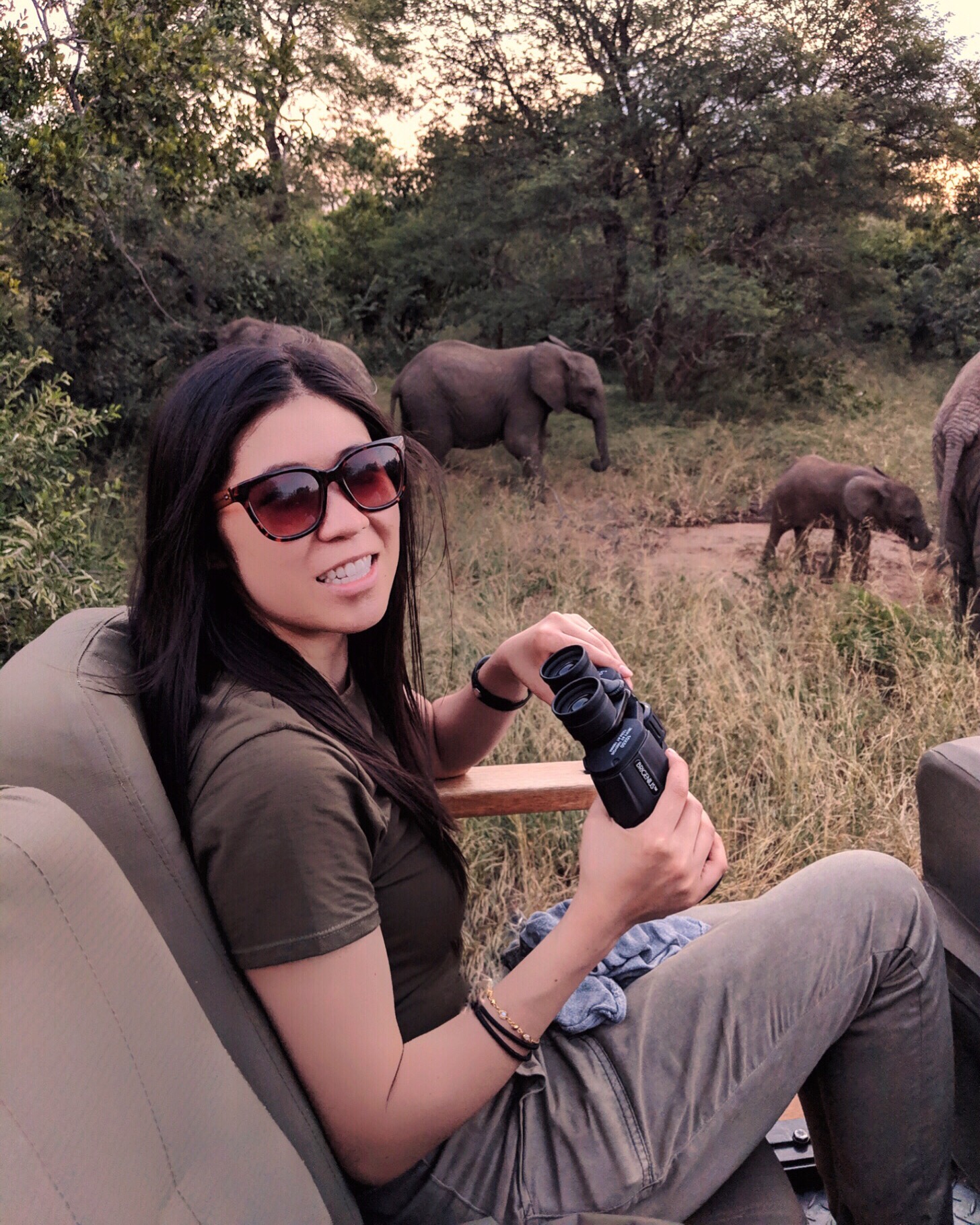


I don’t know what was more exciting – seeing the cutest tiny baby elephant being protected by her mama, or following a female lion at dusk (as a Leo, lions are my favorite animal). We also got the opportunity to see some hyenas take down a giraffe (and also saw the aftermath…which by the way….smelled absolutely horrible!). And of course, I can’t forget about the rare sighting we had of a leopard hiding in a tree.
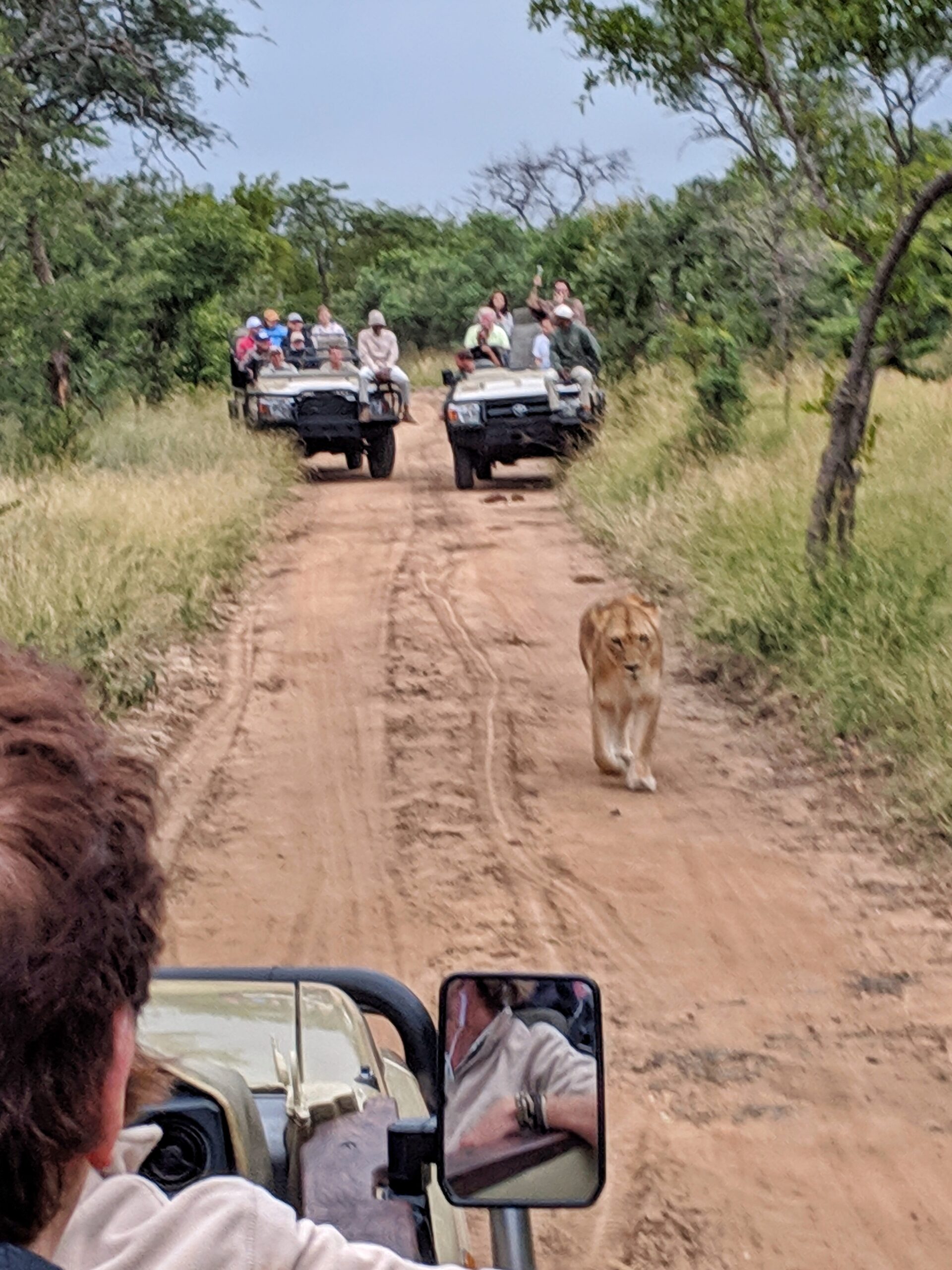
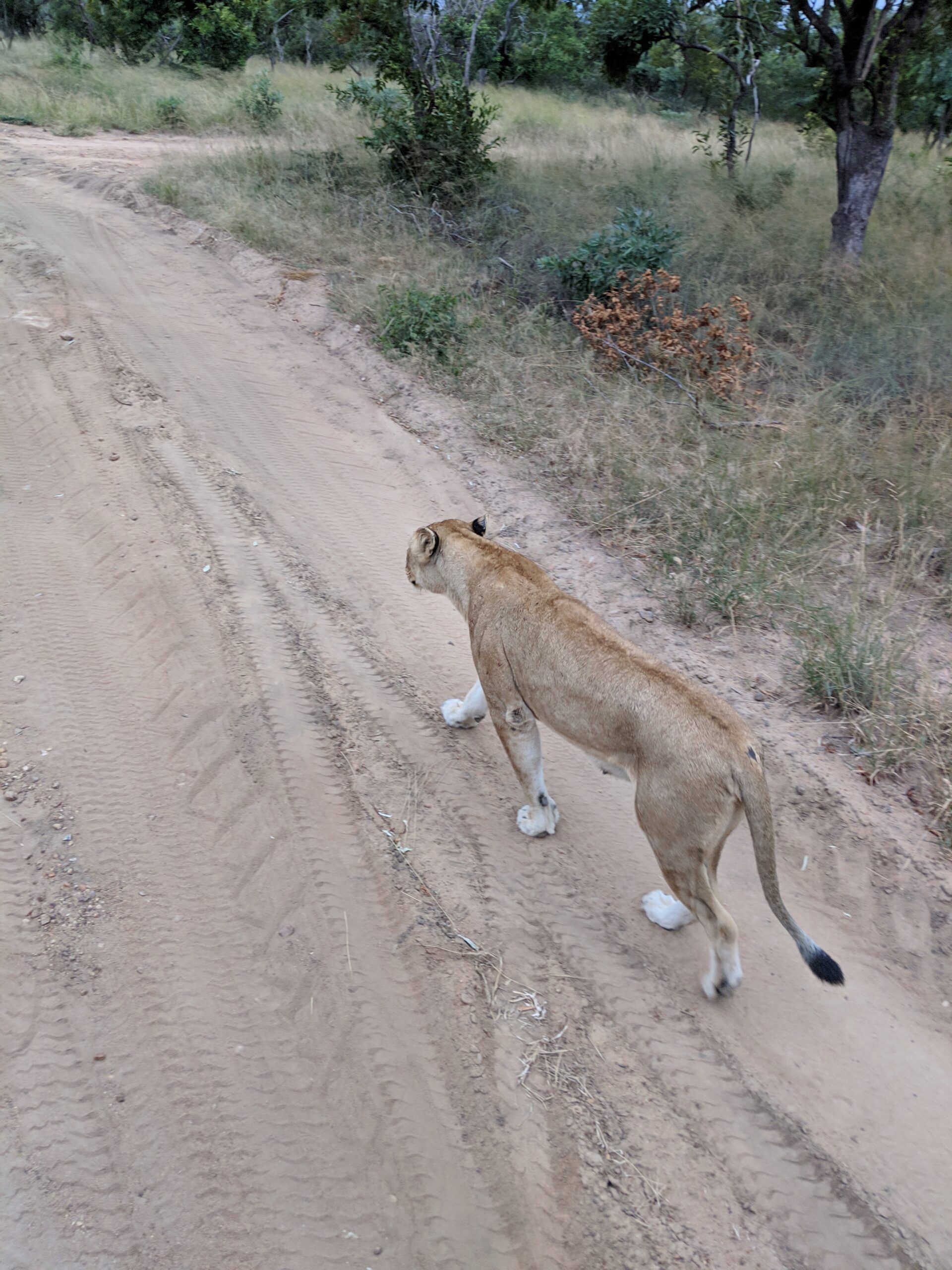
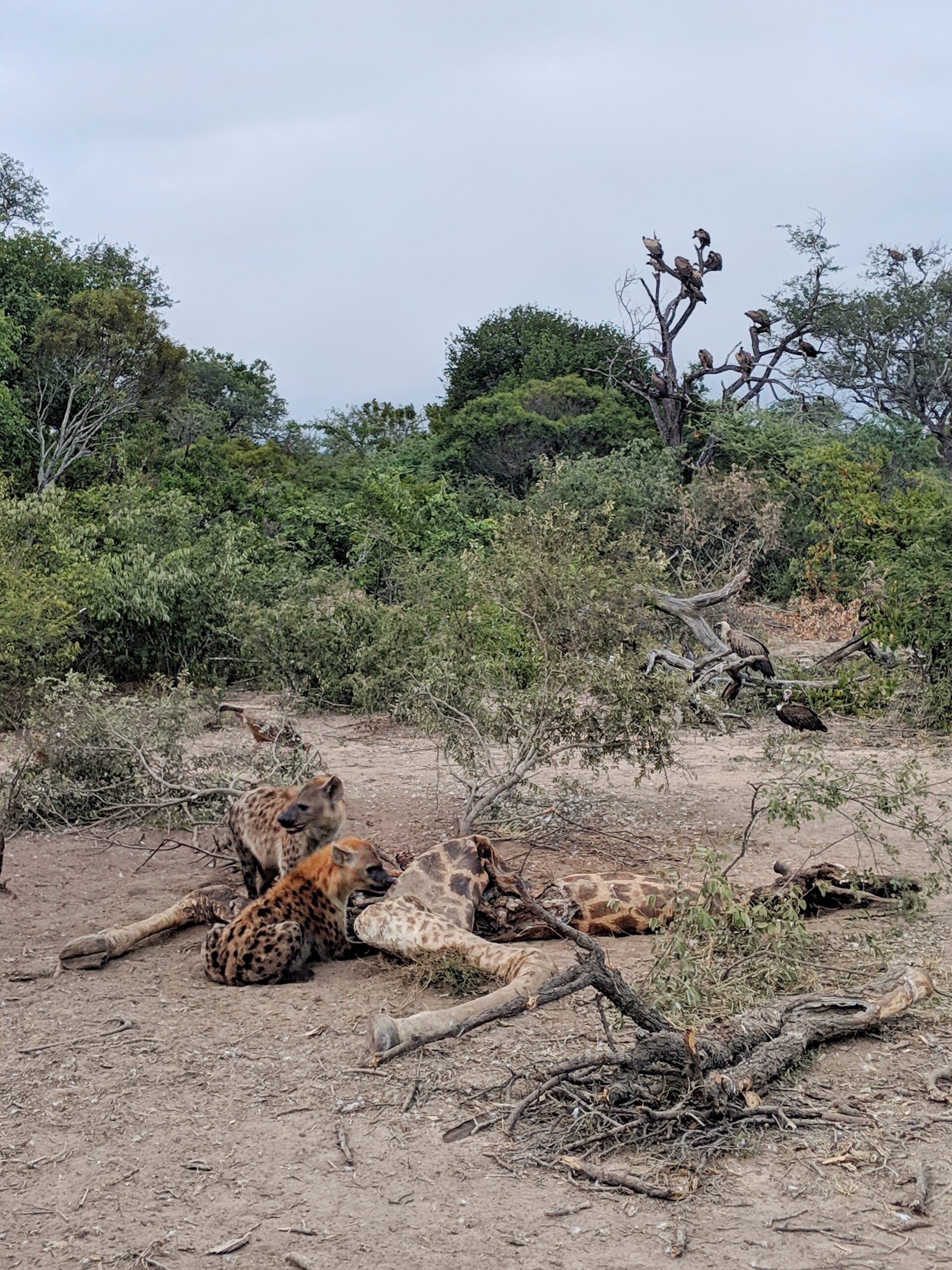
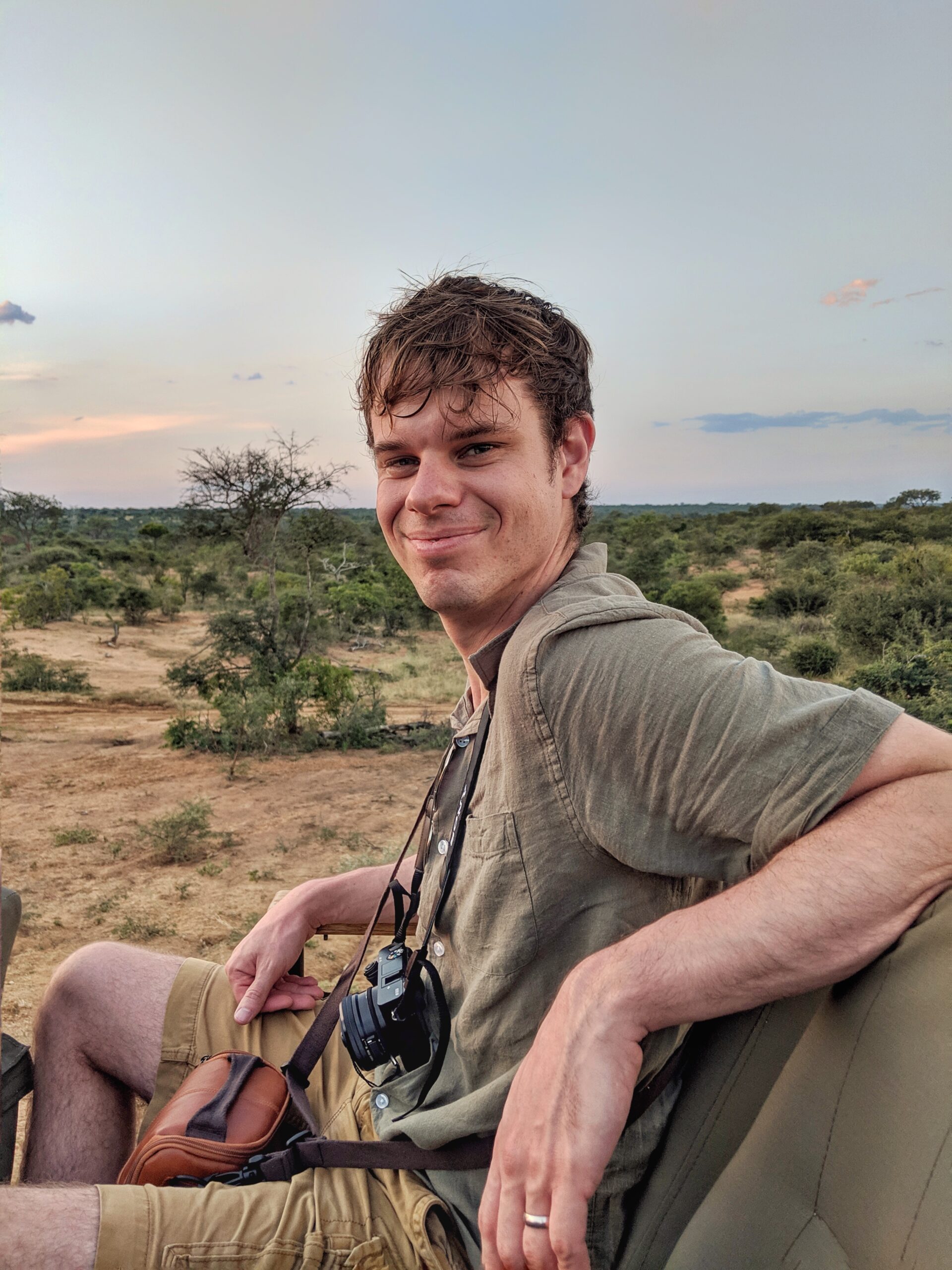
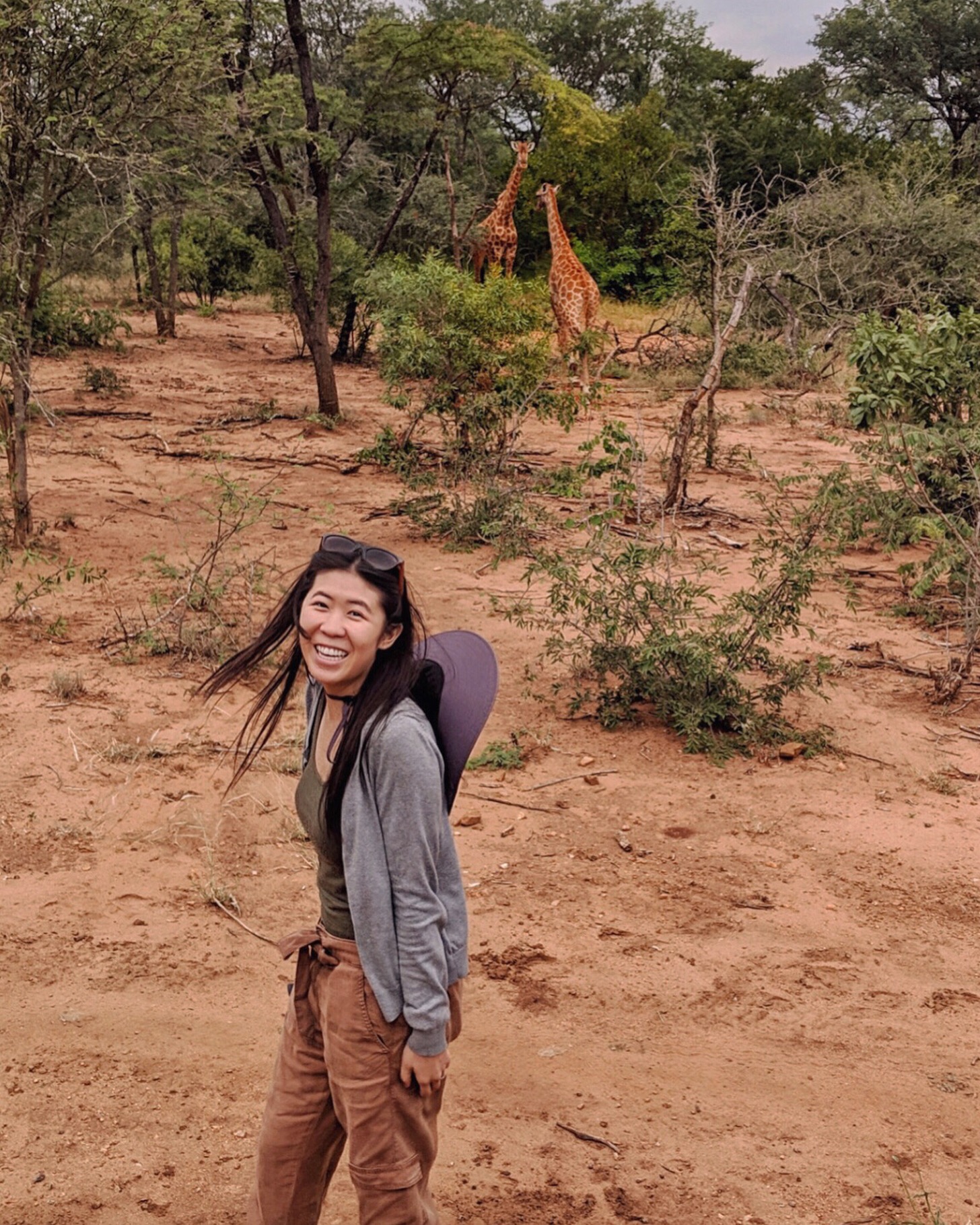

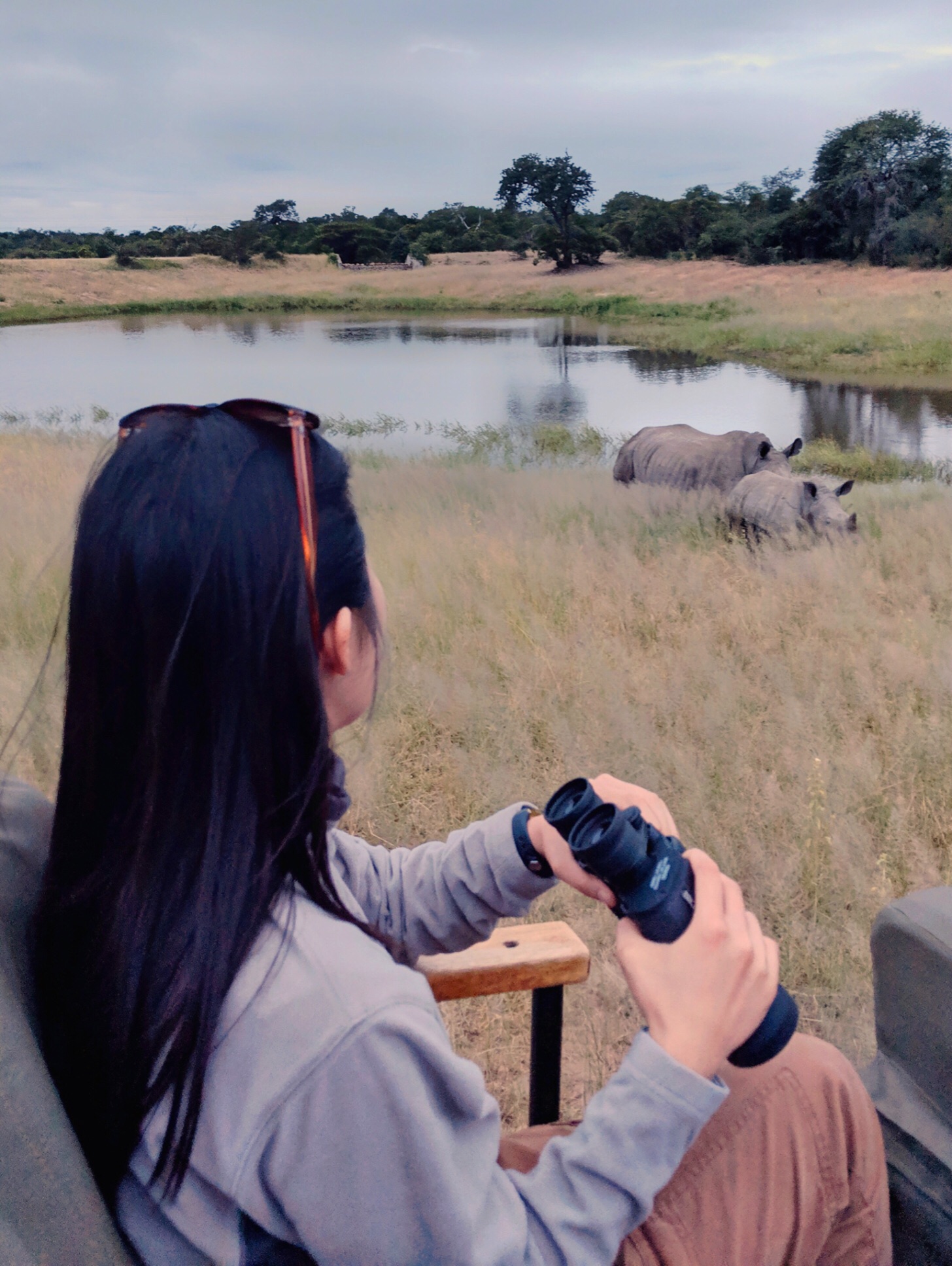



It always felt pretty magical during ‘sundowner’ hour where we were able to get out of the jeep, stretch our legs, and enjoy some beverages and snacks as a group. I have to admit that it was always pretty nerve-wracking getting out of the jeep each time….I mean, we were literally in the wild surrounded by lions, hyenas, and leopards! Thankfully, Gerard and Sepo always did a great job scanning the area for safety before letting us out of the jeep.
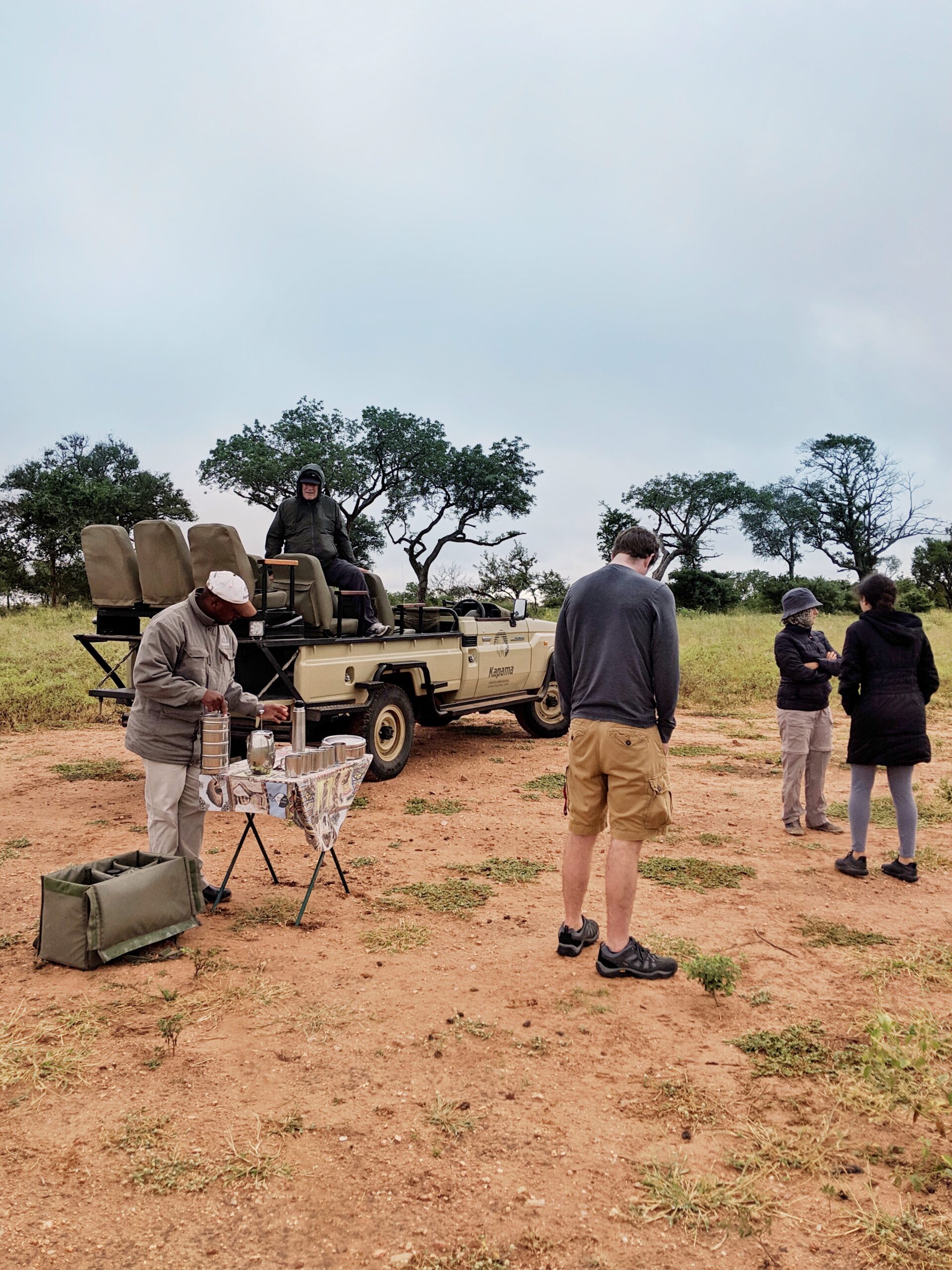
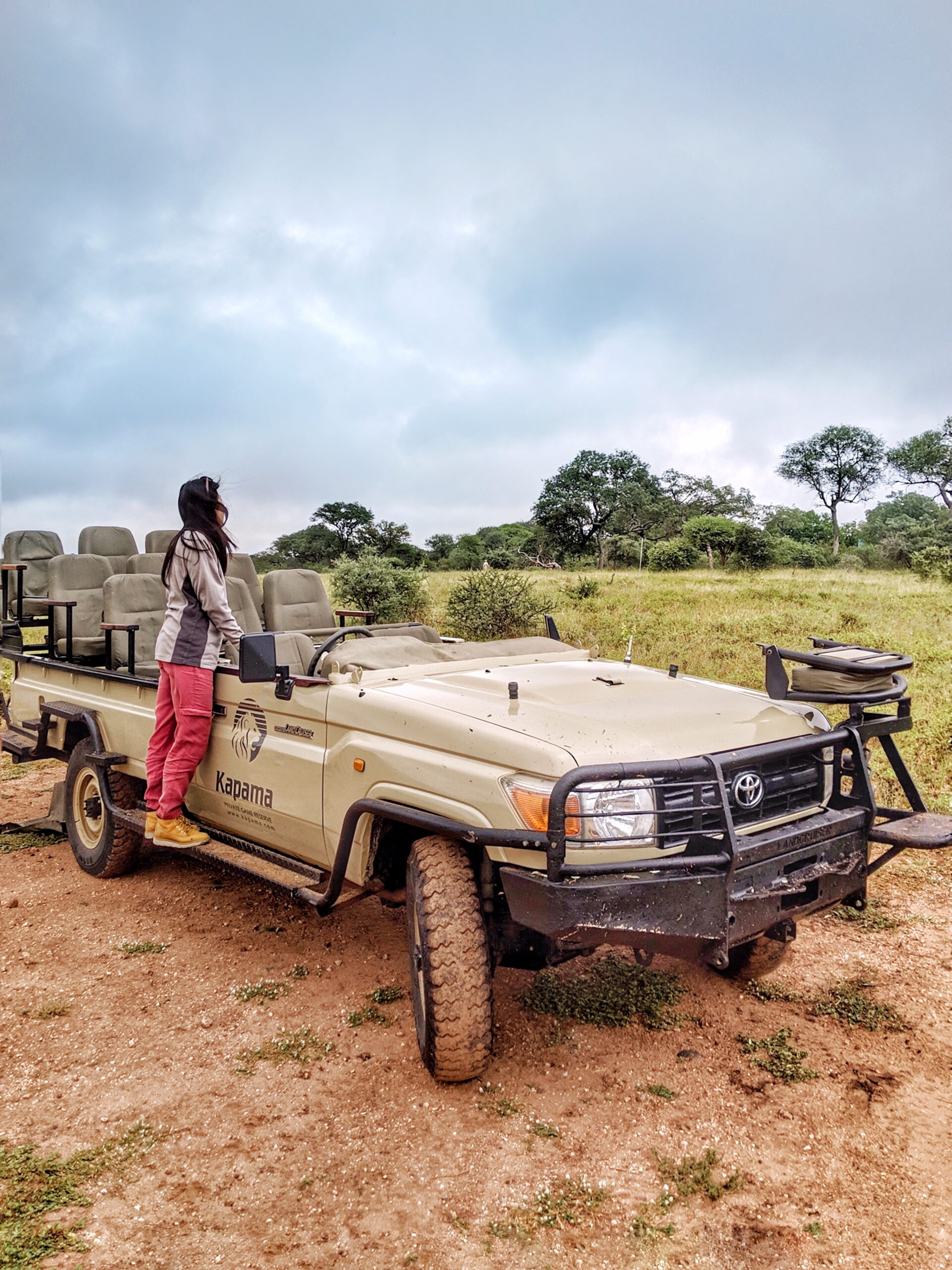


I also have to give a big shout-out to the food served at Kapama. All of the meals were served buffet style and holy cow….the buffet spreads were amazing! I swear I gained 10 pounds from the trip from eating so well. The dinners were especially extravagant…with every type of meat imaginable served at the grill, and a variety of side dishes as well.
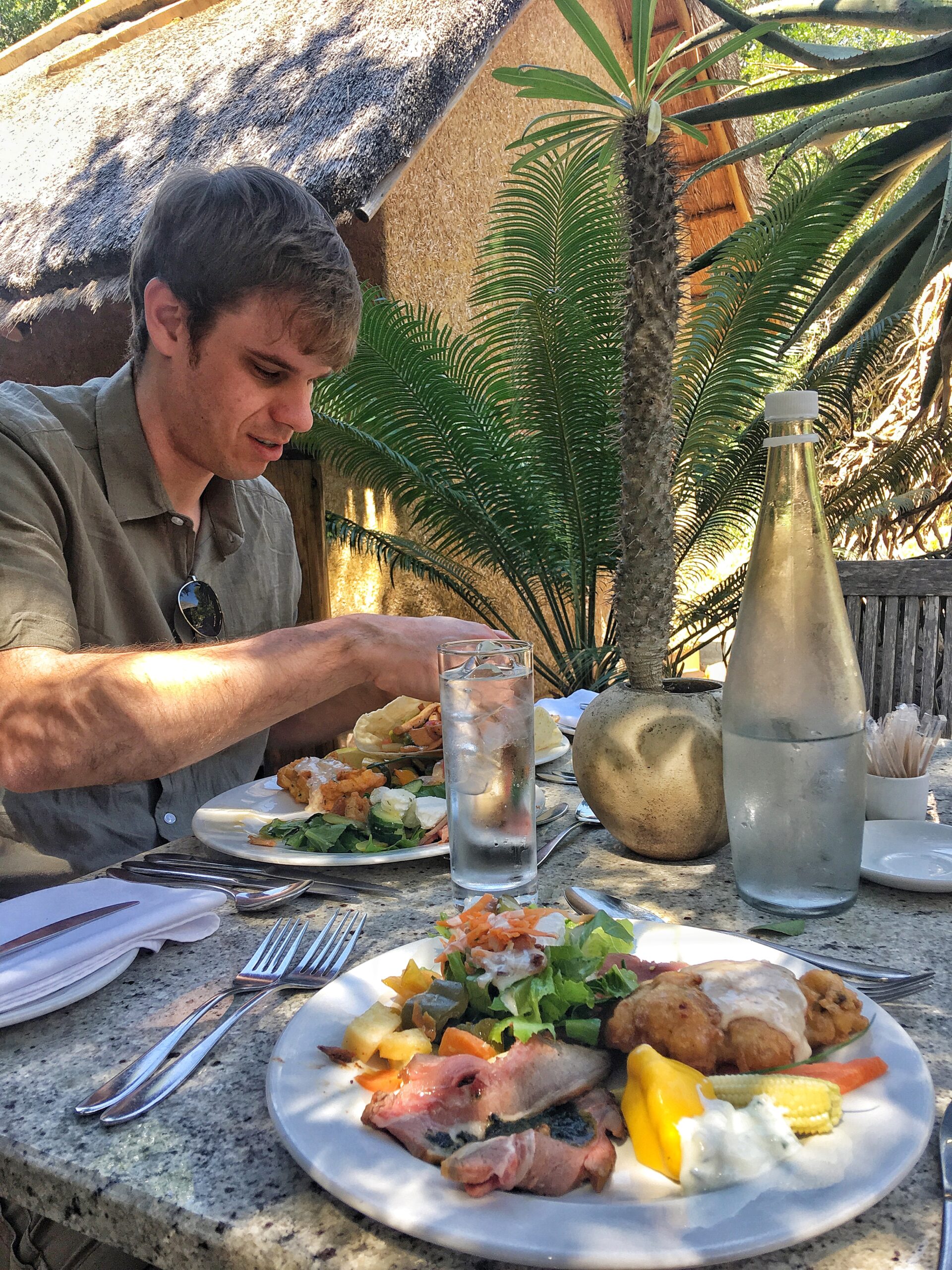
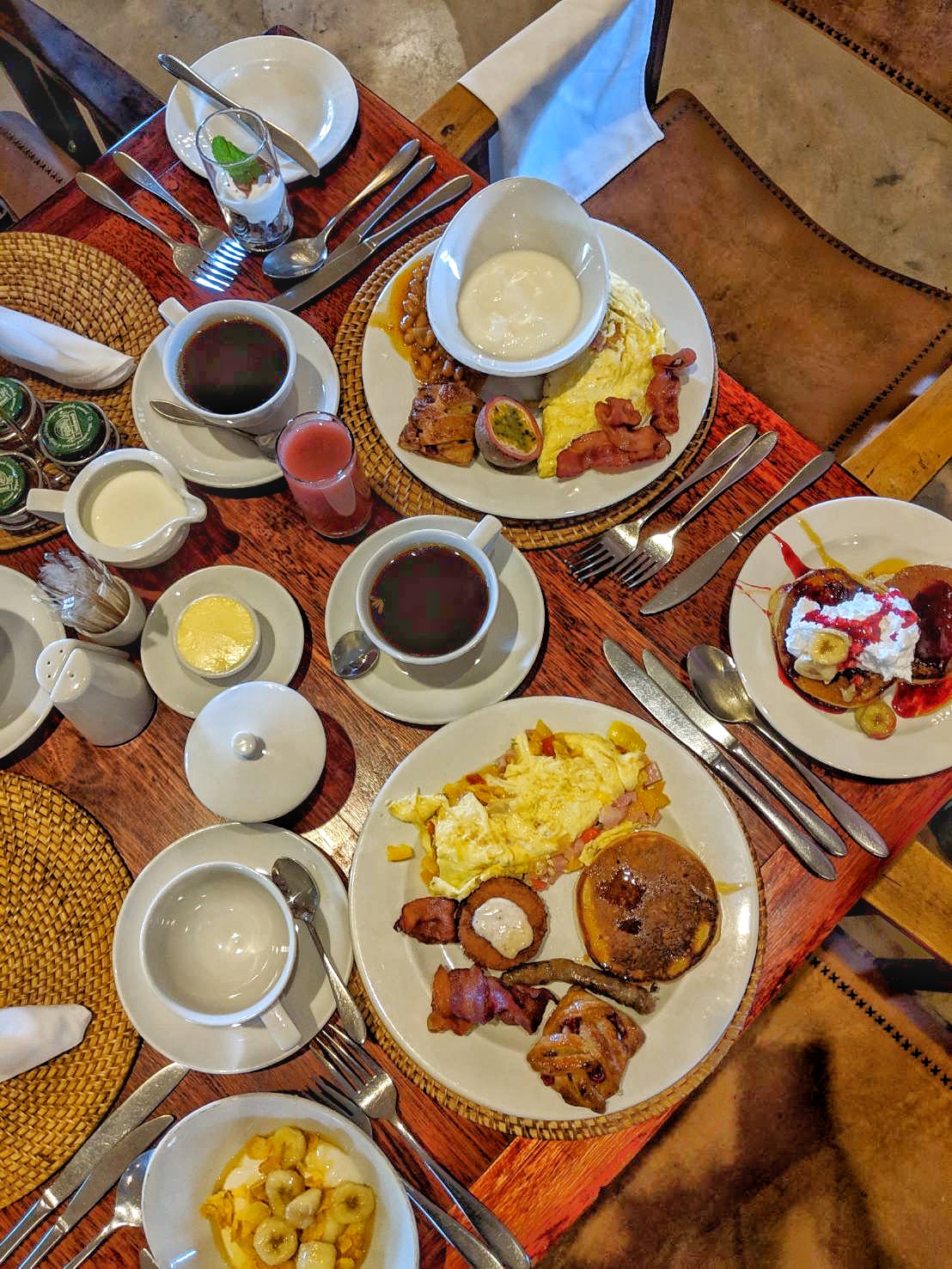
While the private safari experience with Kapama was more expensive than our self-drive portion of the trip, I can’t recommend it enough. The price is steep (around $400-$500/night depending on the season), but you have to remember that everything is included – multiple safaris a day, multiple meals a day (including sundowners and afternoon tea), and luxury suites. It’s 100% worth the money to spend on a once-in-a-lifetime experience.
On our last night in Kruger, I couldn’t help but get teary-eyed at the thought of leaving such a beautiful place. Being able to see so many animals in the wild, meet wonderful people, and witness such gorgeous landscape…I was so grateful that I had the opportunity to experience it all. There are no cages at Kruger…everything is 100% authentic, untamed, and inspiring…and when you’re driving across the open landscape surrounded by running zebras and wildebeests, you feel truly alive.

What to Pack for a Safari
I did a LOT of research on what to pack for a safari, and I’ve listed the major must-haves below. Note – this list is based on a safari during the dry season which sees milder temperatures, so you will want to pack lighter clothing if you choose to visit during the hot, humid season. The most important to remember is to pack light – most of the charter planes only allow for luggage under 40 pounds, and hard-cases are prohibited. The other thing to remember is to pack in lighter colors – bright colors tend to make the animals shy away which defeats the purpose of the safari, and wearing blue or black attracts tse-tse flies.
Clothing
- A few pairs of lighter-colored pants or slacks (e.g., khakis)
- A few pairs of lighter-colored t-shirts for daytime wear
- Jeans and long-sleeve shirts for the evenings (you’ll definitely want to change out of your daytime clothes as it gets pretty dusty on the game drives)
- Windbreaker or fleece jacket for evening game drives
- A lightweight scarf for chilly mornings and evenings
- Waterproof jacket or lightweight poncho
- Sunhat
- Sunglasses (this helps keep the dust out of your eyes)
- Comfortable closed-toe walking shoes
- Flip flops or comfortable sandals for hanging out at the lodge
- Bathing suit
- Socks, underwear, pajamas
hygiene
- Malaria pills
- Anti-diarrhea medicine
- Basic first-aid kit (e.g., aspirin, band-aids)
- Sunscreen (SPF 35 or higher)
- Insect repellent (my favorite brand is ‘Peaceful Sleep’ and you can buy this at any grocery store in South Africa!)
- Tissues (bring these with you in the jeep to help with nose-blowing if you encounter dust)
- Your standard toiletries – moisturizes, face wash, shampoo, etc.
Other
- Camera and lenses
- Memory cards for your camera
- Power strip or converter
- Binoculars (8×40/8×42 are recommended for animal viewing)
- Flashlight or head lamp
- Your standard travel essentials – passport, visas, credit cards, etc.
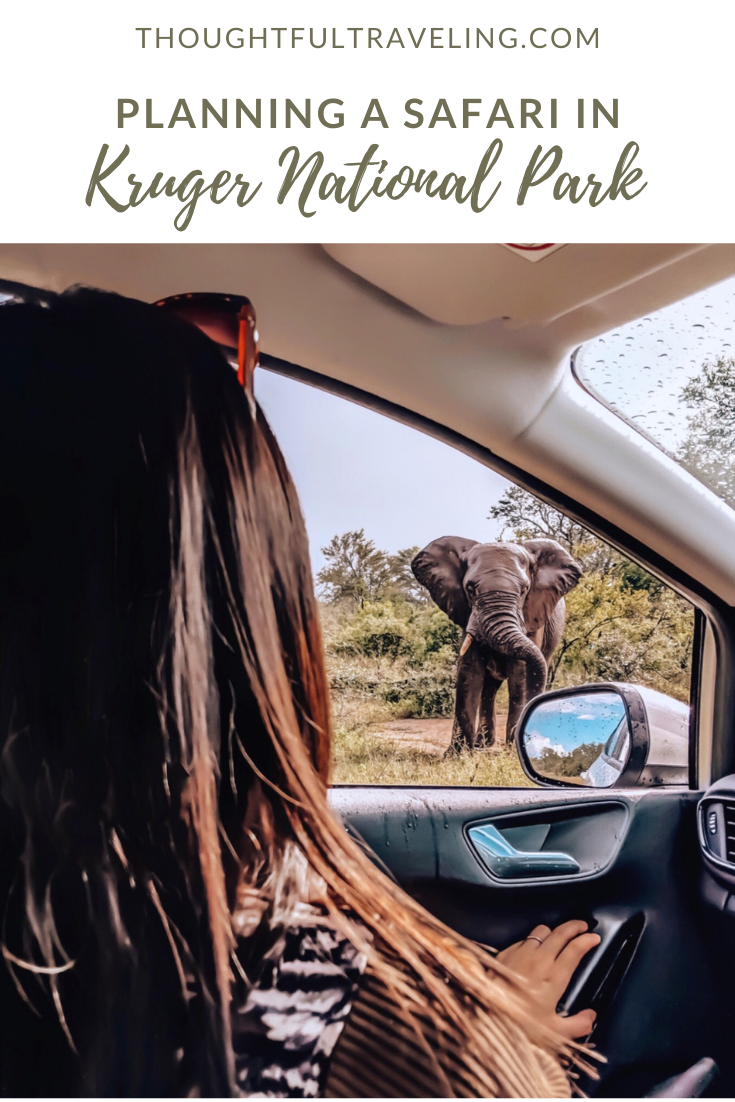
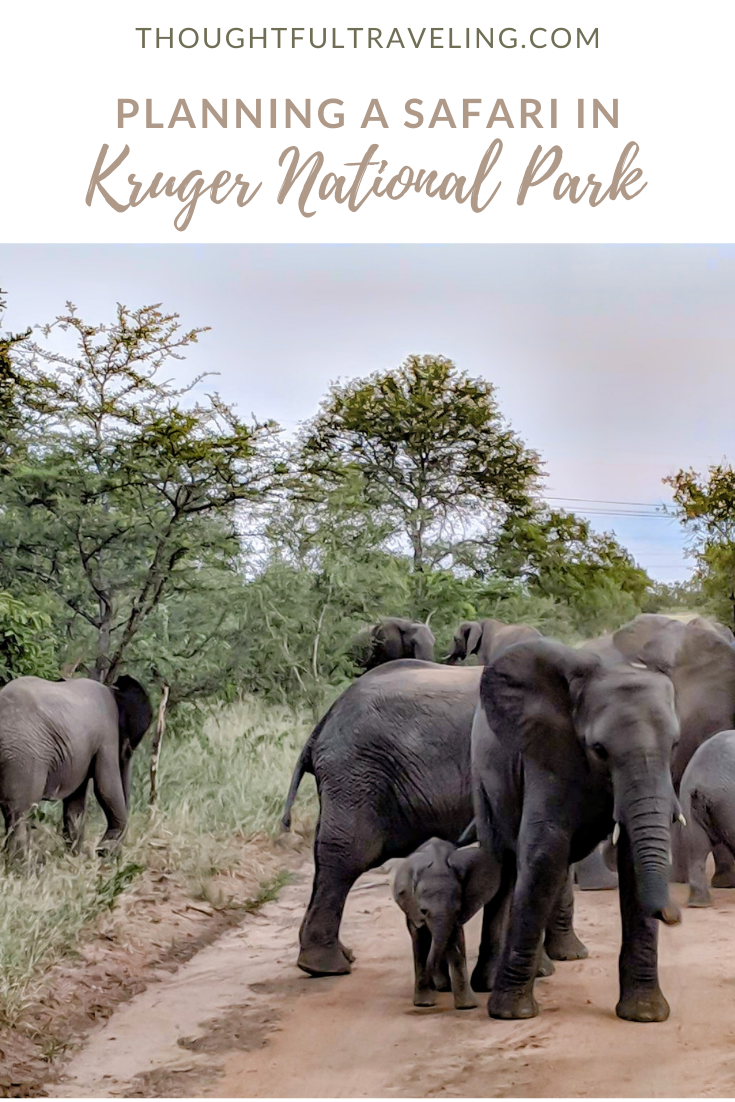
Related Post: How We Spent 4 Days in Cape Town
Related Post: The Perfect Wine Weekend in Stellenbosch
Related Post: Everything to Know about Staying at Giraffe Manor

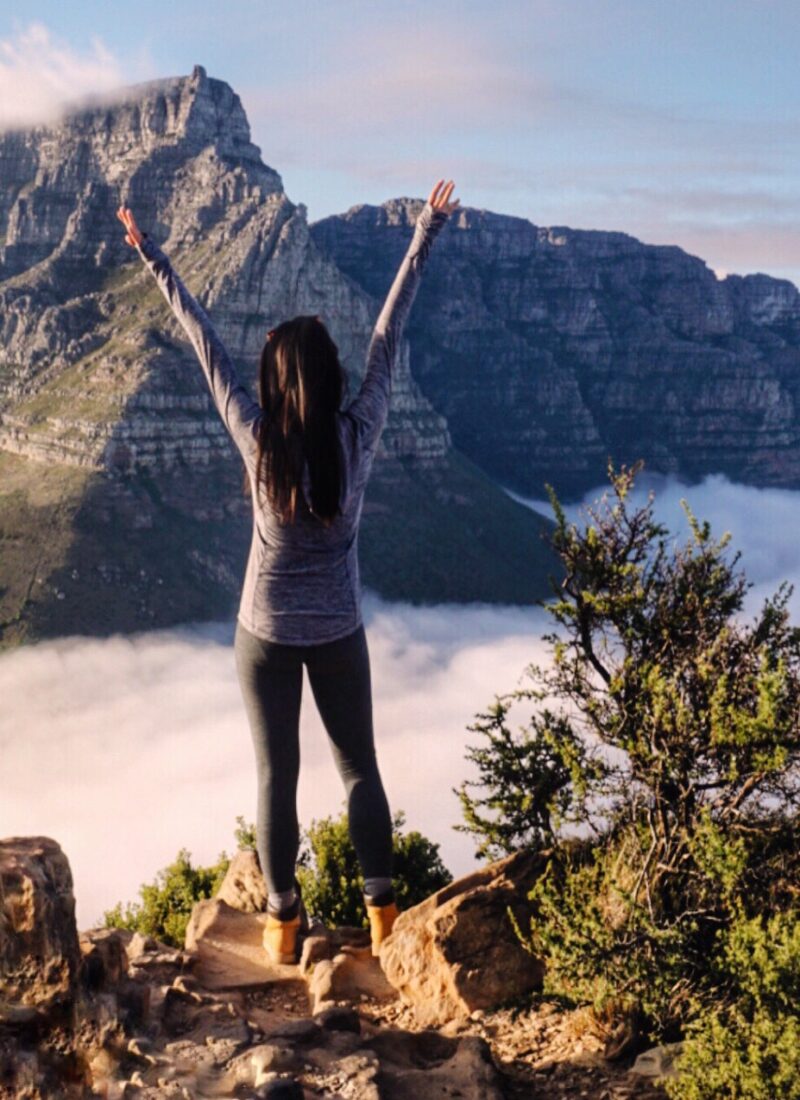
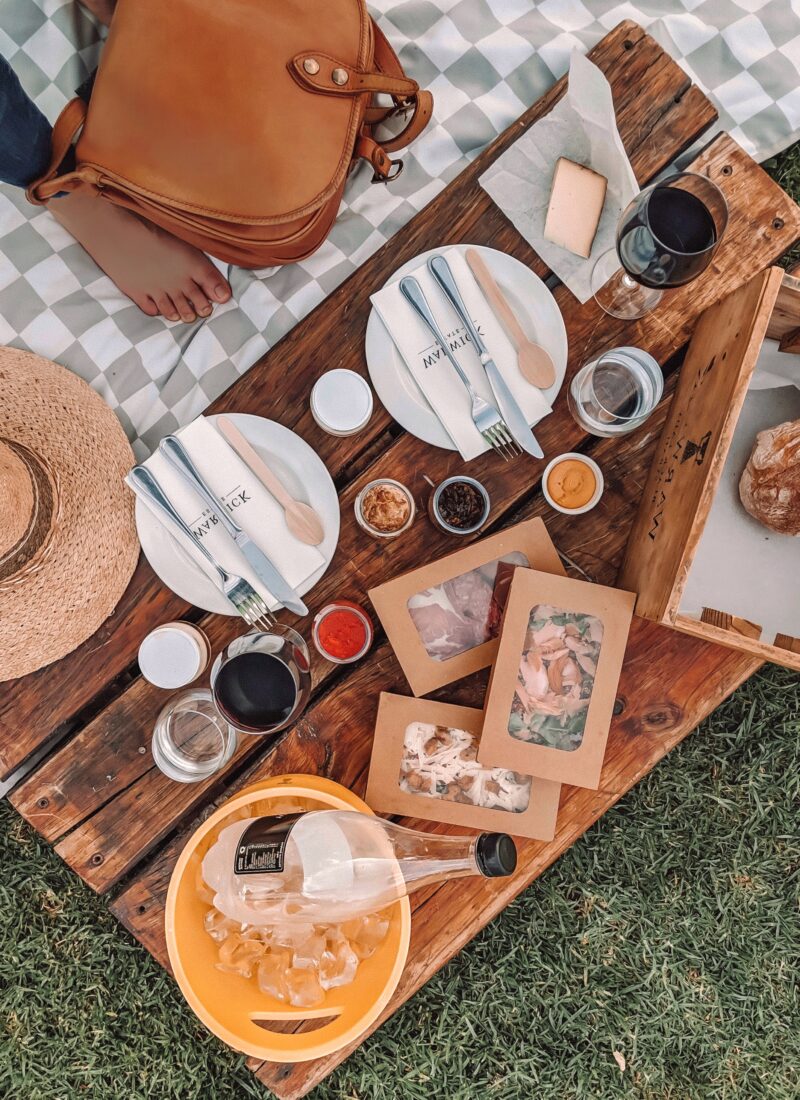
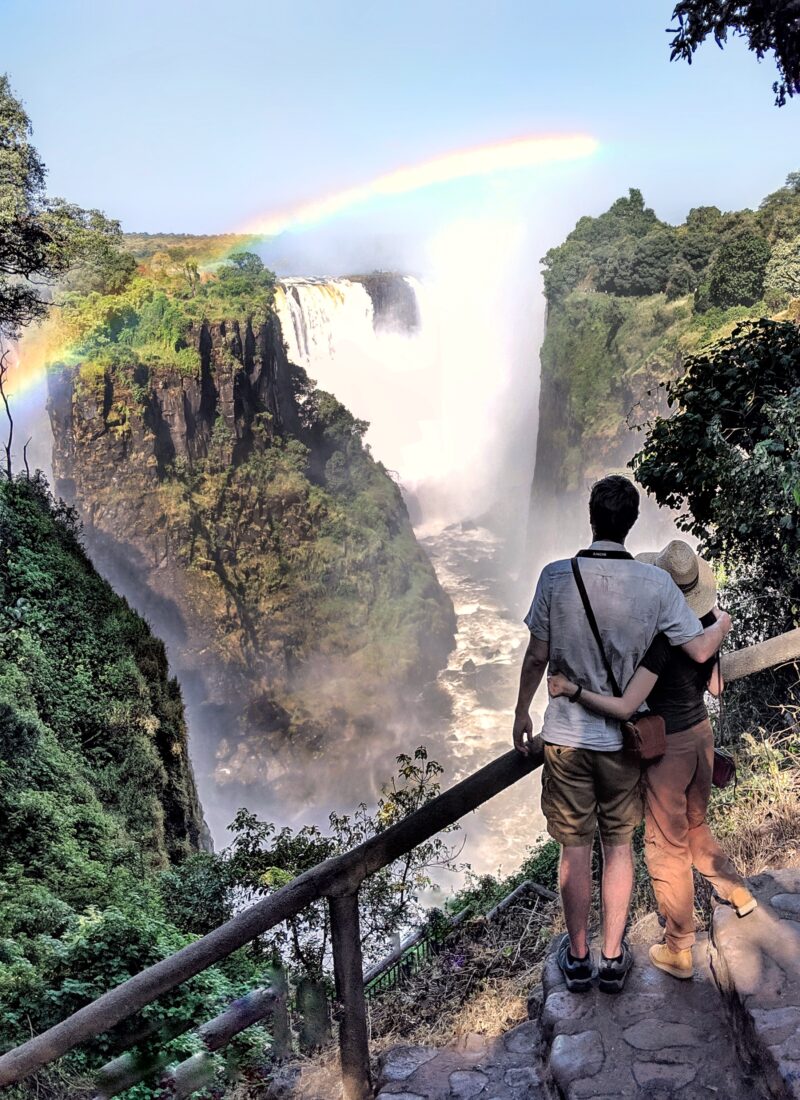
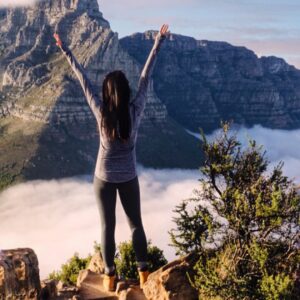

Very informative thanks for sharing